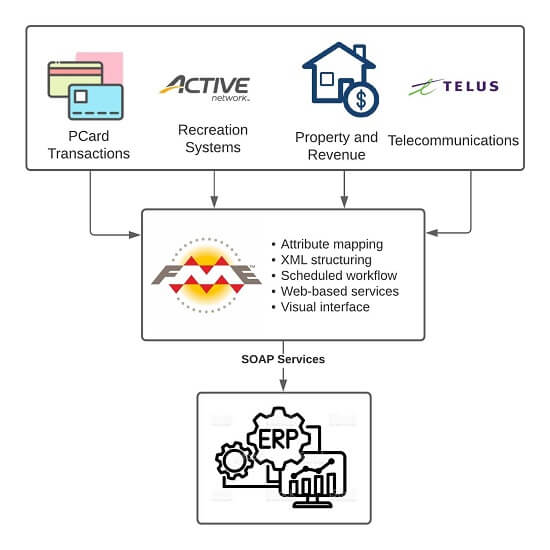FME is best known for processing geospatial and CAD data, but it is also a powerful and cost-effective tool to build bridges between municipal applications beyond GIS. FME is growing in popularity as GIS and IT departments grow increasingly closer together.
Case in point: a Vancouver-area municipal government is leveraging FME to boost organizational effectiveness. When the City’s IT director learned that the GIS department already used FME, he evaluated the software’s capabilities to replace ETL scripts (developed in PHP) that the City was using for application integration.
FME as a powerful alternative
The existing PHP scripts were stable, but difficult and expensive to maintain, requiring extensive knowledge of both PHP and of the City’s business processes which hardly anyone on their IT team had. The director was looking for a simpler, more visual, low-code approach to bridging the City’s applications.
It all starts with a proof-of-concept
With its vast application integration experience, Consortech developed a proof of concept for the City which confirmed feasibility, cost estimates, and determined expected return on investment.
The solution replaced the scripts that bridged transaction data from a banking system (PCard) with the City’s ERP (Unit4 Business World).
It was resounding success—all the critical components of the existing system were seamlessly recreated in FME: from running scheduled workflows and mapping attributes to converting data to a strict XML structure and sending the converted data to the online ERP service via SOAP services.
The next step was to develop a more robust, fully automated solution that did all those things and more: it was also able to generate detailed reports on the status and time of transactions in the ERP system and send transaction status email notifications.
A powerful solution that grows with the organization
What started out as a proof of concept grew into the migration of several other scripted data bridges to FME. Other applications included:
- ActiveNet (recreation)
- Tempest (tax, utilities, municipal by-laws and licensing)
- Telus (landline and mobile phone transactions)
Consortech and the City’s IT team collaborated to develop new and effective integrations by using a bridge framework that was well worth the investment. The only thing left to do was fine-tune a few details, such as connecting to web based services.
Now, the City’s IT department can easily view and modify each of its workflows in FME thanks to its user-friendly visual interface. These results align with the City’s plan to improve organizational effectiveness and translate into savings for the city and its residents.
Start integrating your apps with our new training session:
Making the most of APIs with FME: A backdoor to your data

